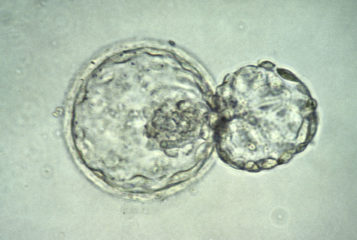In a world first, scientists at the University of Minnesota have shown it is possible to 3D print a mini beating human heart.
Previous attempts to grow a heart in the lab have involved taking human pluripotent stem cells, differentiating them into heart cells and then using 3D printing technology to graft them into a structure known as an extracellular matrix. However, this method has not worked due to the cells never reaching the critical density needed for the organoid to beat.
'After years of research, we were ready to give up and then two of my biomedical engineering PhD students, Molly Kupfer and Wei-Han Lin, suggested we try printing the stem cells first,' said Professor Brenda Ogle, the lead researcher of the study and head of the Department of Biomedical Engineering in the University of Minnesota College of Science and Engineering.
By 3D printing the stem cells and allowing them to reach critical density before they are differentiated into heart cells, the team has been able to demonstrate that it is possible to grow a 1.5cm beating heart organoid in less than a month.
Professor Ogle, who also serves as director of the University of Minnesota's Stem Cell Institute said: 'I couldn't believe it when we looked at the dish in the lab and saw the whole thing contracting spontaneously and synchronously and able to move fluid.'
While the scientists fully admit that their lab-grown heart is nowhere near as complex as a fully developed human heart, they do believe it will help further cardiac research.
The organoid's miniature size was carefully designed to enable its implantation into a mouse, and the nature of the stem cells differentiating beside one another is believed to produce an organoid that behaves in a very similar way to a real heart.
'We now have a model to track and trace what is happening at the cell and molecular level in (a) pump structure that begins to approximate the human heart,' Professor Ogle said. 'We can introduce disease and damage to the model and then study the effects of medicines and other therapeutics.'
This ground-breaking discovery, published in Circulation Research, has turned standard protocol on its head and could help scientists to better understand heart disease, a condition that kills 170,000 people every year in the UK.
Sources and References
-
Researchers 3D print a working heart pump with real human cells
-
In situ expansion, differentiation, and electromechanical coupling of human cardiac muscle in a 3D bioprinted, chambered organoid
-
Incredible: Scientists 3D print a heart pump that beats on its own
-
Researchers 3D print a heart pump using stem cells





Leave a Reply
You must be logged in to post a comment.